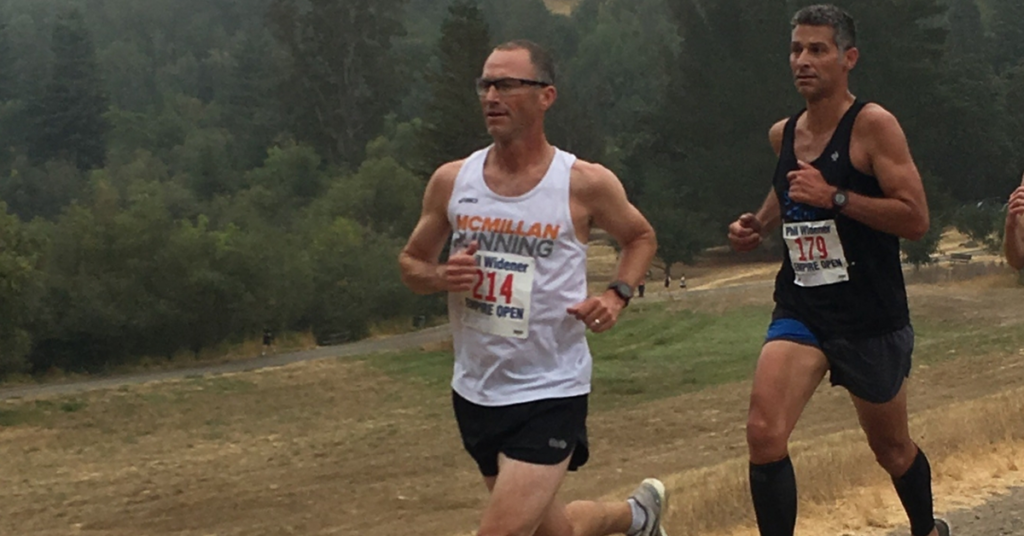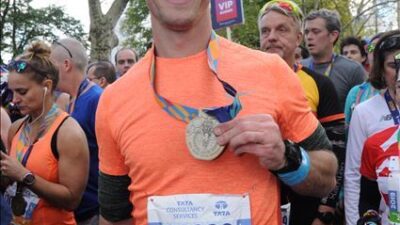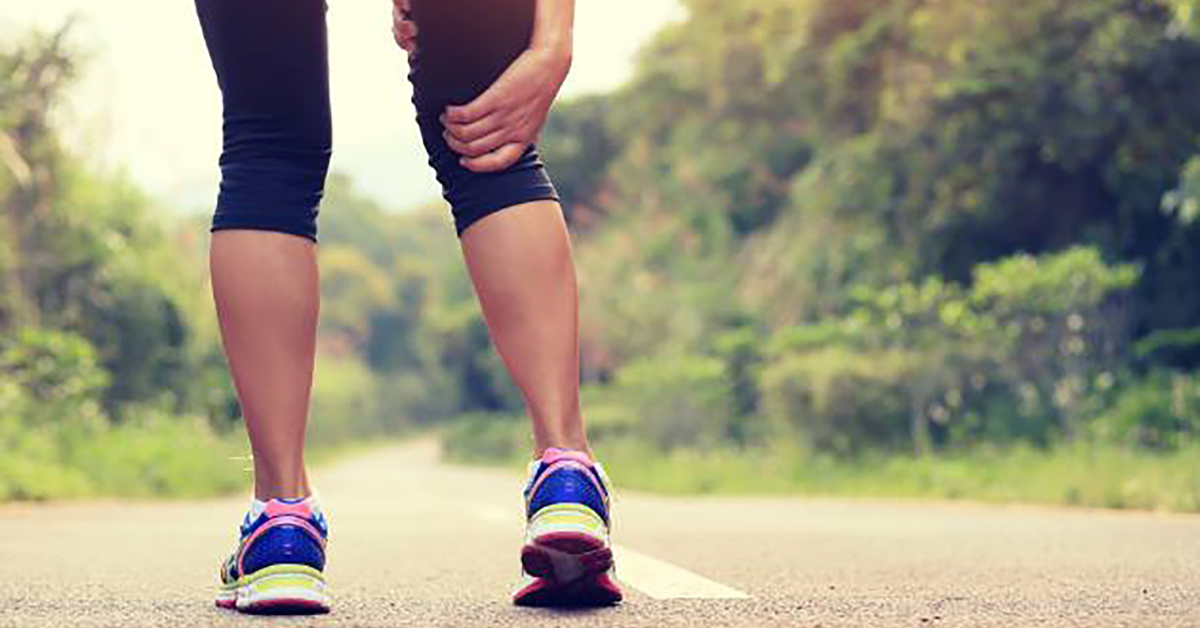Masters Running 101
What makes masters running different from being an open runner? Similar to the answer to most running-related questions, “It depends.” One’s career as a masters athlete has a lot to do with one’s running history. Which of these three profiles do you most relate to?
THE “GRIZZLED VET”
If you were a competitive runner in high school, college, and continued racing most of your adult life, then being a masters athlete is most likely defined by an obsession not to “get slow” or curb the inevitable decline. You have a lot of mileage on your odometer after nearly thirty years of training and racing. You probably can’t touch your toes, walk up stairs and not be out of breath, or get out of a chair without looking like you’re 90. Stoplights are not a welcome respite on a run because getting going again requires several painful steps and a lot of groaning! You most likely don’t have PRs ahead of you; this is sounding grim isn’t it! But… you still find yourself placing well in races, especially in your age group. Competitive running is in your bones. Baring a career-ending injury, nothing is going to stop you from continuing to run at the highest level possible.
The challenges you face are managing your battle scars, or chronic weak spots, and maintaining speed, stride length and flexibility. Your advantage is that you have a huge engine or aerobic base after so many years of endurance training and superior running economy. Your experiential knowledge on a race course is unmatched by most of your competitors. You’re scrappy, parceling out your reserves over the course of a marathon. You’re not afraid to dig deep and enter the “pain cave” when that moment of reckoning comes. You almost always perform relatively well, even in adverse conditions. No matter what race day throws your way, you’ve been there before.
THE “NEWBIE”
If you’re this masters runner, you’ve only been in the sport a few months to a few years. You’re ecstatic to have found running. You feel born again! Much to the dismay of your friends and family members, you can’t run enough, talk enough about running, and you’re ceaseless in your mission of trying to convert everyone close to you to start running.
On the good side, you still have all your PRs ahead of you. You’re crushing it every race, at every distance. With your historically low mileage, you respond immediately to specific training and measured increases in volume. By adding specificity, you could see performances beyond your wildest dreams. Aging seems to have no hold on you. Nothing hurts, and you feel strong on nearly every run. Yet, you need to be careful to curb your enthusiasm and let the musculoskeletal system catch up with your rapidly increasing cardiovascular system.
THE “COMEBACK KID”
If you are a member of this final group of masters runners, you are the most dangerous competitor toeing the line in my book. You come from a competitive running background or background in another endurance sport. Careers, kids, being burned out on training and racing, have led to a five year or more hiatus from running. You are hungry to train and race again, and you know what it takes to be good because chances are you were really fast before life took your running career hostage. Now the kids are grown, or mostly grown, you’re established in your career, and you have fresh legs like the newbie from having several years off.
THE 5 TRUTHS TO MASTERS TRAINING
Regardless of your running history, there are five training truths that are unique to masters runners:
- They need more recovery time between workouts. The window of time might vary, but the old hard day/ easy day rule looks more like hard/ easy/ easy/ hard or even more rest days between concerted efforts. It might be tempting to “make hay” as a Newbie master, but most masters in spite of experience, benefit from a “ten day” training cycle versus the traditional “seven day” training cycle. A “ten day” cycle means that about every tenth day you hit the same training stimulus, like speed work, threshold, or a long run, instead of hitting the same type of workout every week.
- Less is more. Junk miles are not on the diet. One of my college teammates, the epitome of the Comeback Kid, took more than ten years off from running. She came back to the sport and was performing even better than she had in her early twenties. She started training with a group of young elites from Boulder. She was frustrated because in spite of adapting well to the training, the coach wouldn’t let her do as many miles as the younger athletes. When she finally asked him why she wasn’t allowed to go with the rest of the group on all runs, he told her point blank. “You can’t run 100 miles a week. You’re too old.” That’s some tough love, but he was right. 100 miles a week is too risky for the benefit in the majority of cases. Instead, she ran 75-80 miles a week at the top end, rocked her workouts and races, and remained injury-free.
- They are all over 40. For a while the Newbie may feel immune to the chronic aches and pains the Grizzled Vet endures on nearly every run, but all masters need to know their weaknesses and should follow “Prehab,” core, and strength training routines. Muscles, tendons and fascia grow stiff as we age. The masters runner needs to keep all his or her parts moving, supple and in good working order. Maintaining range of motion and stride length is critical if you want to stay competitive.
- They need the grunt work. Masters need those upper end threshold workouts to push up their lactate thresholds. There was just an article in Competitor Magazine, discussing the rate at which Vo2 max decreases after 40. Those who are unwilling to do the grunt work, or intervals at or above lactate threshold, can lose up to 10% of their Vo2 max in their early 40s. Vo2 max isn’t everything, but losing 10% will very likely have a profound effect on your racing performances.
- They need to work on speed. Neuromuscular training or “turnover” work should be done year-round because of its role in maintaining your stride length and quickness on your feet. Strides, drills, and some short, sprint intervals take little away from the rest of the training week. You might huff and puff a bit in the moment, but nearly immediately post workout, you’ll recover. Most people express that doing strides post run actually gives them more energy following the training session, and they have more pep in their legs running the next day. I recommend you use Greg McMillan’s Form Drills routine. He’s created a simple, follow-along routine for anyone who wants to improve their form and put some spring in their step.
Now you’ve completed Masters Running 101. Test your competency at your next race!
Katie McGee is a McMillan Running Coach. Learn more about our Personal Coaching where you can train with a coach like Katie by your side to plan your training and talk about race strategy, performance nutrition, injury prevention, stretching, and much more.
Thinking it’s time for a prehab program? Our 3HAB Pre-Run Routine is your prehab stretching, mobility, and strength training rolled into 3 simple movements that you can do before runs
Video On-Demand: 3HAB Routine of the Week
$52.00 / year
Injury-proof your body from the ground up with a fun, new routine delivered to you every week for a year designed to mobilize, stretch, and activate. $1/week, billed annually. Auto renews every year.
Description
A new 3-movement pre-run routine each week to build a strong, supple runner’s body.
No time for prehab? Not anymore! Introducing our innovative 3HAB routine – three simple movements, done before (or after) each of your runs that across the program will build a strong, injury-resistant body. And best of all, it takes less than 5 minutes!
With the 3HAB Pre-Run Routine of the Week, you get a new, fun follow-along video routine each week focused on a different area of your body. It’s your prehab stretching, mobility, and strength training rolled into 3 simple movements that you can do before runs. Across the year, you’ll move from head to toe and back again and quickly notice a big difference in your runs.
Special Introductory Price
of $1 per Week
(Billed Annually)
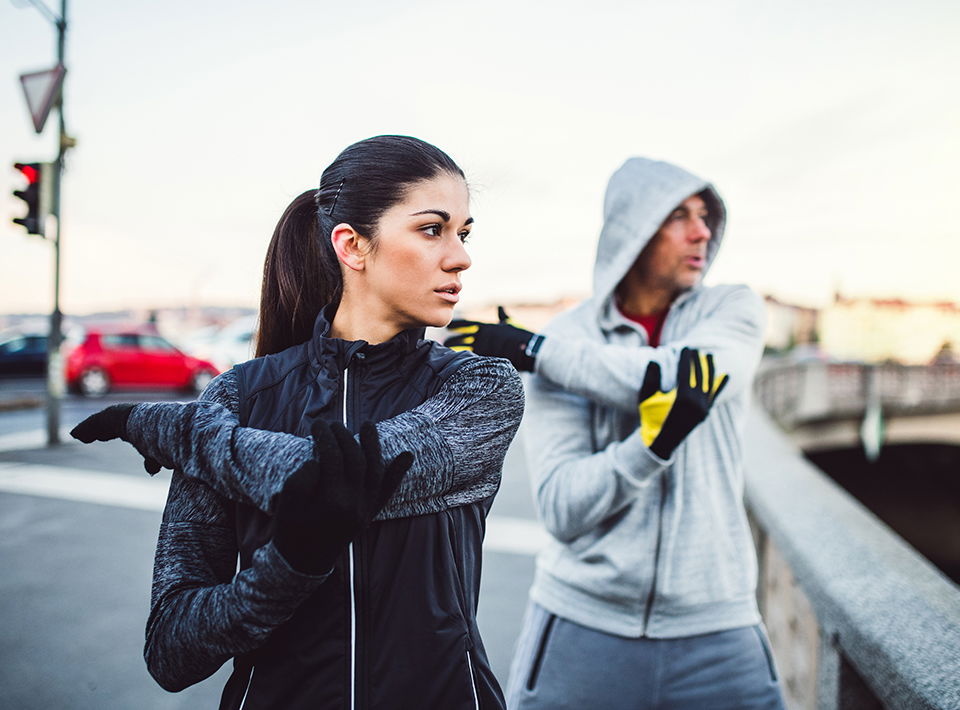
Better Runs Start with 3HAB!
Special Introductory Price of $1 per Week
- After signing up, you’ll receive an email with the link to the first week’s 3HAB routine.
- Simply click the link and you’ll access Coach Angela’s video explaining your first week’s routine.
- Each routine takes less than 5 minutes to complete and works to mobilize, stretch and then activate the targeted body part. (You know you can invest 5 minutes to improve your running!)
- Do the routine then go for your run. Notice how much better your run feels. (Or, do it after your run as part of your cool-down.)
- For the next 52 weeks, your new routine is delivered to your inbox. How easy is that?!
- Routines start with the foot and move up the body in 8-week cycles. After 8 weeks, you return to the foot and start the next level of exercises.
- One year. One new you in less than 5 minutes per run. Your body will love it!
Want to feel better on your runs? 3HAB is for you. 3 movements in less than 5 minutes. You got this! Let’s get started.
Have a question? We’re here to help.
START TODAY
The McMillan Peak Performance Bundle™ has everything you need to advance your running goals, all in one easy-to-use app.
“I got my first Boston Qualifier today with a 21 personal record!”
– Ramona M.

3HAB FAQs
The 3HAB program is a 3-movement routine that addresses an area of your body each week to help you have better runs and, over time, build an injury-proof body. There are 52 routines in the program and you get one routine to work on each week. You start by working on your feet in Week 1 then move upwards in the body with each successive week in 8-week cycles. Then, you return to the feet and begin the next level of injury-proofing. Super simple. Uber effective.
Ideally, you’d do the routine before each and every run. However, we know schedules can be tight so we ask that you commit to doing the pre-run routine 2-3 times per week.
3HAB is our lowest cost prehab routine. It cost just $1 per week. (Yes. You read that right.) The full year of 3HAB routines is just $1 per week (billed annually) and across the year, you’ll do routines that work on your feet, calves/shins, hamstrings, quads/knees, glutes, core/lower back, thoracic/upper back and shoulders. Every 8 weeks, you’ll advance to the next level of movements for each body part, learning where your deficits are and correcting them. You’ll love getting a new routine each week and we’ll be here for you throughout the year.
We firmly believe that all runners should do some prehab training to keep injuries at bay and increase performance. The 3HAB system is designed to compliment our other prehab programs to help you have better runs. And to be honest, we know some runners are so busy that they can’t get to a full prehab program but we want you to be doing something so we created this quick routine.
Each week, you’ll be sent your new routine via email. In the email, you’ll link to the website where Coach Angela will walk you through the week’s routine in her weekly video. This video can be watched on any device at any time so if you are ready for your run, just pull up the video on your phone and follow along. Simple as that!
Angela Tieri is a certified personal trainer and multi-time Boston Qualifier. Her running success ranges from short distances to the ultra marathon and her secret to success is McMillan training (of course!) and a commitment to staying injury free. She understands how injury-proofing and running fit together and because she’s a runner herself, she “gets it” and works with runners everyday to help them stay injury-free while pushing themselves to new PRs.
The Power of 3HAB
In 2 weeks I can’t believe the difference in my feet and legs! Your foot and calf routine has made such a difference! I have been doing it 2 times a day instead of only before runs and it’s just amazing how my legs feel! You guys have done what no other physical therapist has done for me! I am truly grateful! Can’t wait for next week’s video! -Monica M.
At an age (69) where I should be marking dramatic declines in my strength, mobility and running times, I’m instead seeing improvement. I credit my two years of training with Angela as the major reason I’m turning back the clock. – Jack T.
I have felt more improvement with our handful of sessions than all the mix of PT, massage, doctors etc. that I have tried so far combined. My only regret is that our paths didn’t cross earlier! – Marios A.

I have the utmost respect for Greg and am impressed with his abilities as a coach.
I attribute most of my success in running to Greg’s training philosophy. The plans work.
Greg is smart, very smart. He’s guided me through all the ups and downs that running has thrown at me all the way to the Olympics.
How awesome this group is! When I first started, I was hesitant to be in groups with a bunch of strangers and did not feel this it would be helpful. I WAS SO WRONG!!! How amazing it is that a group of strangers are great motivators. I look forward to seeing runs and workouts and like the kudos on mine. A few times, I was having that “I am not running feeling”, but then I see runs on the boards and I get my butt out there! So thank you random runners for your support and motivation. And thank you Greg for giving us the opportunity to “meet” and work together toward our goals. Best of luck with training!!!
“I thought I was mentally strong but never realized the power that was untapped. In this video, Dr. Stan quickly and easily showed me how to set better goals, get into an optimal mindset and ultimately, get the most from myself in training and racing.” Carl L.
I had run seven marathons before last weekend and had attempted to qualify for Boston in my past three marathons. After missing my BQ cut-off time by 4-6 minutes in those last three marathons, I started analyzing what I needed to change and researching different running plans. I purchased your Level 4 combo runner plan in July and used it to train for the 2019 Savannah Marathon. In Savannah, I ran my 8th marathon and ran a 3:42:18, cutting 9:12 off of my PR from 2015 and beating my last marathon time of 3:54:29! Best of all, I QUALIFIED FOR BOSTON 2021, beating my 3:50 cut-off time by over 7 minutes!
Thank you Run Team members, Greg and the other coaches. What a family – great to learn from, encourage each other and get some re-assurances when you are in doubt. Roll on to the next race.
Thank you so much for your thoughtful responses. This is exactly what sets McMillan RunClub apart from other formats I’ve tried.
PR by 6 min and BQ with 14 min! Crushed it! Thanks for all the help!
Thanks, Greg! I really appreciate your advice and support through this training cycle. I’m feeling confident going into this weekend, and can’t wait for Saturday!
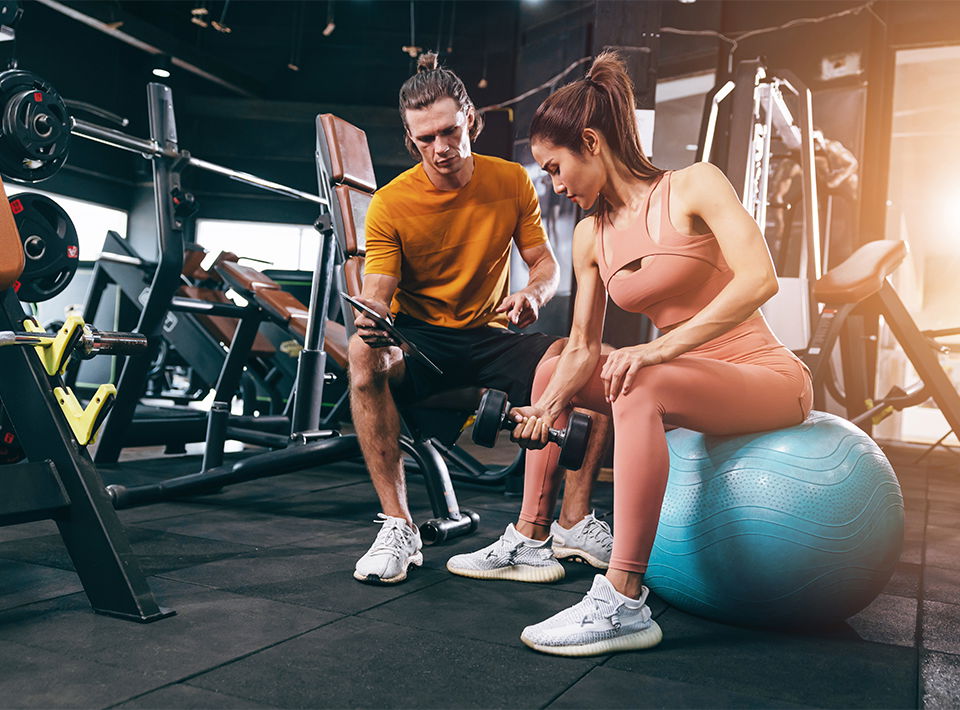
Already Purchased 3HAB?
Select My Membership Page and your video-on-demand
memberships will be listed. Click on the membership
you would like to view.
Or just click the button below to take you to the Video On Demand Page

